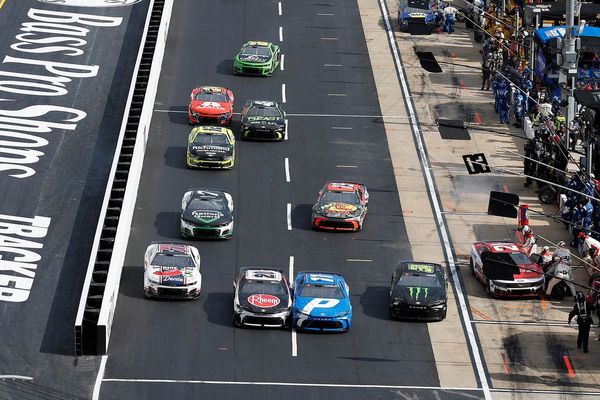/NVIDIA%20Corp%20logo%20on%20phone%20and%20AI%20chip-by%20Below%20the%20Sky%20via%20Shutterstock.jpg)
The euphoria about artificial intelligence (AI) is dissipating now, even though it does not look like the typical boom-to-bust cycle. Nvidia (NVDA) was the biggest beneficiary of the AI trade, reflected in its parabolic price action, which some see as reminiscent of Cisco (CSCO) during the dot-com days.
Meanwhile, Nvidia’s stellar rally was backed by a more than commensurate rise in its sales and profits. In its fiscal year 2025, which ended on Jan. 26, 2025, Nvidia reported revenues of $130.5 billion, compared to $27 billion in fiscal year 2023, which was the last fiscal year before sales of its AI chips really took off.
Nvidia’s Sales and Profits Have Soared Amid AI Euphoria
Nvidia’s GAAP net income soared from $4.36 billion to $72.88 billion over the period. Put simply, unlike the dot-com days where stocks rallied based on flimsy metrics like the number of clicks, Nvidia’s breathtaking rally – which briefly made it the world’s biggest company – was backed by hard numbers.

If anything, Nvidia stock now looks cheaper than it did before it emerged as the AI bellwether. It currently trades at a forward price-earnings (P/E) multiple of 26.6x, which is significantly lower than the valuation at which the stock has traded at over the last decade.
Meanwhile, following the broader market selloff on Thursday, April 3, Nvidia stock is now below $100. In a previous article, I noted the possibility of Nvidia drifting toward the psychologically crucial $100 level amid the trade war. With the stock now falling toward those levels, is it a buy now? Let’s explore.
NVDA Stock Forecast
Wall Street analysts were overwhelmingly bullish on Nvidia over the last two years – tending to raise their target prices every few months and advise buying the odd dip in the chip designing giant.
However, of late there are signs that analysts are rethinking their stances on NVDA. Yesterday, HSBC downgraded the stock to a “Hold” while slashing the target price by $55 to $120. D.A. Davidson and Mizuho also lowered the stock’s target price last month.
Incidentally, HSBC lowered its rating on Nvidia not because of concerns over President Donald Trump’s tariffs, which happen to exclude semiconductors, but because of concerns over Nvidia’s pricing power and sustainability of tech companies’ AI capex especially in light of DeepSeek’s low-cost AI model.
Meanwhile, Nvidia still has a consensus rating of “Strong Buy” from analysts while its mean target price of $177.19 is 74% higher than the April 3 closing prices. The stock’s Street-high target price of $220 is over twice the current price levels.

Should You Buy the Dip in NVDA Stock?
While Nvidia is not directly impacted by Trump’s tariffs, is not immune from the escalating trade war for three reasons. Firstly, the Trump administration has said that semiconductors "will be addressed separately,” thereby leaving the door open for tariffs in the future.
Secondly, other countries might retaliate against U.S. companies like Nvidia over Trump’s tariffs. This is particularly true for China where Nvidia has already lost market share due to U.S. export control restrictions. The world’s second-largest economy has incidentally announced countertariffs on U.S. goods signalling a worsening trade war.
Finally, Nvidia will also feel the indirect impact of the tariffs. As share prices of tech companies fall due to the trade war, they might face pressure from shareholders to cut costs. If the trade war leads us into a recession as many economists fear, tech companies’ burgeoning AI capex – much of which lands in Nvidia’s coffers – would be among the casualties.
Overall, while I believe that there should be buying support for Nvidia as it falls below the $100 price level, I would be wary of adding more shares at this point amid the escalating trade war.







